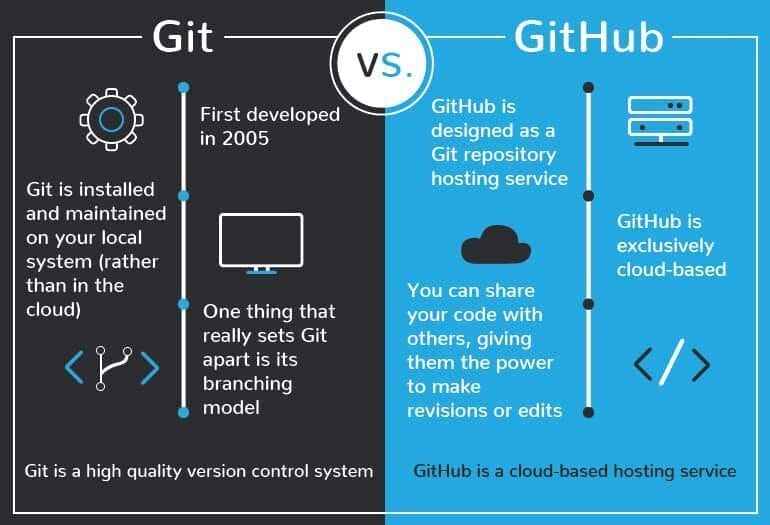What are branches and why they matter
Branches in Git are parallel lines of development that allow you to work on different features, fixes, or experiments within the same repository. Here’s an explanation without using a list:
In Git, branches serve as distinct lines of development within a repository. Each branch represents an independent snapshot of your project’s files, allowing you to work on different features, bug fixes, or experiments without affecting the main codebase.
When you create a new branch, Git copies the current state of your code (including all files and commit history) into a new branch pointer. From this point onward, any changes you make — such as adding, modifying, or deleting files — are isolated to that specific branch. This isolation ensures that changes made on one branch do not interfere with the work on other branches.
Branches are crucial in software development for several reasons:
- Feature Isolation: Branches allow developers to work on new features or bug fixes independently of each other. This isolation prevents conflicts and makes it easier to manage changes.
- Parallel Development: Teams can work on multiple features simultaneously by creating separate branches for each feature. This speeds up development cycles and promotes collaboration.
- Testing and Experimentation: Branches enable developers to experiment with new ideas or alternative solutions without affecting the main codebase. If an experiment is successful, its branch can be merged into the main branch.
- Version Control: Branches provide a historical record of changes and enable you to revert to previous states if needed. Each branch retains its commit history, making it possible to track the evolution of specific features or bug fixes.
- Code Reviews: Branches facilitate code reviews by allowing team members to review changes in isolation before merging them into the main branch. This helps maintain code quality and catch potential issues early.
Overall, branches in Git are essential for organizing and managing the development workflow, enabling teams to collaborate effectively, maintain code stability, and innovate without risk.
Creating, switching, and deleting branches
Managing branches effectively is crucial in Git for organizing and isolating different features, fixes, or experiments within your project. Here’s how you can create, switch between, and delete branches:
Creating a Branch: To create a new branch in Git, you use the command git branch <branch-name>. This command establishes a new branch with the specified <branch-name>. For instance, if you want to create a branch named feature-branch, you would type:
git branch feature-branch
Switching Branches: Switching between branches is achieved using the git checkout <branch-name> command. This allows you to move your working directory to the branch specified by <branch-name>. For example, to switch to the main branch, you would execute:
git checkout main
Deleting Branches: Deleting a branch in Git is done using the git branch -d <branch-name> command. This removes the branch specified by <branch-name> from your repository. If you want to delete a branch named feature-branch, you would enter:
git branch -d feature-branch
These Git commands enable developers to work on different aspects of a project concurrently, manage code changes effectively, and collaborate seamlessly with team members without affecting the main development branch (main or master). Understanding and mastering these operations are essential for efficient version control and project management in software development.
Common branching strategies: feature branches, release branches, and hotfix branches
In Git, branching strategies play a crucial role in managing software development workflows effectively. Here’s an overview of common branching strategies: feature branches, release branches, and hotfix branches.
Feature Branches: Feature branches are used to develop new features or functionalities isolated from the main development branch (main or master). Developers create feature branches to work on specific tasks or user stories without interfering with the main codebase. Once the feature is complete and tested, it can be merged back into the main branch through a pull request or merge request.
For example, to create a feature branch named feature-login, you would use:
git checkout -b feature-login
This command creates and switches to a new branch named feature-login.
Release Branches: Release branches are used to prepare for a new software release. These branches allow stabilization and final testing of the upcoming release while development continues on feature branches. Once all necessary changes are made and the release is ready, the release branch is typically merged into the main branch and tagged with a version number.
To create a release branch named release-1.0, you would use:
git checkout -b release-1.0
This creates and switches to a new branch named release-1.0.
Hotfix Branches: Hotfix branches are used to quickly address critical issues or bugs in production code. These branches are created from the main branch (main or master) and are typically short-lived. Once the hotfix is implemented and tested, it is merged back into both the main branch and any active release branches to ensure all codebases are up to date.
To create a hotfix branch named hotfix-login, you would use:
git checkout -b hotfix-login main
This creates and switches to a new branch named hotfix-login based on the main branch.
By utilizing these branching strategies effectively, teams can maintain a clean and stable codebase, facilitate parallel development, and streamline the release process in software development projects.

Leave a Reply